حراجناموجود
بازگشت به محصولات


HCV Real-TM Quant DX Real-TM,sacace,96 t
59,727,614 تومان 49,773,012 تومان
HBV Real-TM Quant DX Real-TM ,sacace,96 t
46,454,817 تومان 38,712,348 تومان
ناموجود
HBV Real-TM Quant Dx Handbook Real Time PCR Kit for the Quantitative detection of Hepatitis B Virus in human plasma For Quantitative inVitro Diagnostic Use REF V5-96/3FRT 96 For use with Rotor-Gene® 6000/Q (Qiagen) For use with SaCycler-96™ (Sacace) Sacace Biotechnologies Srl via Scalabrini, 44 – 22100 – Como – Italy Sacace™ HBV Real-TM Quant Dx VER 28.02.2022 2 KEY TO SYMBOLS USED List Number Contains sufficient for tests Lot Number Version For InVitro Diagnostic Use CONTROL INT Internal control Temperature limitations CONTROL 1 High Positive Control Manufacturer CONTROL 2 Low Positive Control Consult instructions for use CONTROL -N Negative Control Expiration Date CAL 1 Standard 1 Caution! CAL 2 Standard 2 Keep away from sunlight Sacace™ HBV Real-TM Quant Dx VER 28.02.2022 3 TABLE OF CONTENTS NAME……………………………………………………………………………………………………………………………..4 INTRODUCTION ……………………………………………………………………………………………………………….4 INTENDED USE…………………………………………………………………………………………………………………4 PRINCIPLE OF ASSAY…………………………………………………………………………………………………………5 MATERIALS PROVIDED………………………………………………………………………………………………………6 MATERIALS REQUIRED BUT NOT PROVIDED………………………………………………………………………..6 WARNINGS AND PRECAUTIONS …………………………………………………………………………………………7 STORAGE AND SHIPPING INSTRUCTIONS…………………………………………………………………………….8 STABILITY ………………………………………………………………………………………………………………………..8 QUALITY CONTROL …………………………………………………………………………………………………………..8 SAMPLE COLLECTION, STORAGE AND TRANSPORT ………………………………………………………………8 INTERFERING SUBSTANCES ……………………………………………………………………………………………….9 REAGENTS PREPARATION………………………………………………………………………………………………….9 DNA ISOLATION ……………………………………………………………………………………………………………….9 INTERNAL CONTROL ……………………………………………………………………………………………………….10 ASSAY CALIBRATION……………………………………………………………………………………………………….10 ASSAY PROTOCOL …………………………………………………………………………………………………………..11 QUALITY CONTROL PROCEDURE ………………………………………………………………………………………12 RESULTS INTERPRETATION………………………………………………………………………………………………12 PERFORMANCE CHARACTERISTICS……………………………………………………………………………………13 ANALYTICAL SENSITIVITY……………………………………………………………………………………………..14 LINEAR RANGE……………………………………………………………………………………………………………14 SPECIFICITY ………………………………………………………………………………………………………………..14 GENOTYPE DETECTION………………………………………………………………………………………………..15 CROSS-REACTIVITY………………………………………………………………………………………………………15 ROBUSTNESS………………………………………………………………………………………………………………15 PRECISION………………………………………………………………………………………………………………….16 CROSS CONTAMINATION …………………………………………………………………………………………….17 PROTOCOL FOR ROTORGENE™ 6000/Q…………………………………………………………………………….18 PROTOCOL FOR SaCycler-96® Real Time PCR system ………………………………………………………….23 TROUBLESHOOTING ……………………………………………………………………………………………………….25 Sacace™ HBV Real-TM Quant Dx VER 28.02.2022 4 NAME HBV Real-TM Quant Dx INTRODUCTION Hepatitis B virus (HBV) is a member of the Hepadnavirus family. The virus particle, (virion) consists of an outer lipid envelope and an icosahedral nucleocapsid core composed of protein. These virions are 42 nM in diameter and are sometimes referred to as “Dane particles”. The nucleocapsid encloses the viral DNA and a DNA polymerase that has reverse transcriptase activity. The outer envelope contains embedded proteins that are involved in viral binding of, and entry into, susceptible cells. The virus is one of the smallest enveloped animal viruses, but pleomorphic forms exist, including filamentous and spherical bodies lacking a core. These particles are not infectious and are composed of the lipid and protein that forms part of the surface of the virion, which is called the surface antigen (HBsAg), and is produced in excess during the life cycle of the virus. Acute infection with hepatitis B virus is associated with acute viral hepatitis – an illness that begins with general ill-health, loss of appetite, nausea, vomiting, body aches, mild fever, and dark urine, and then progresses to development of jaundice. It has been noted that itchy skin has been an indication as a possible symptom of all hepatitis virus types. The illness lasts for a few weeks and then gradually improves in most affected people. A few people may have more severe liver disease (fulminant hepatic failure), and may die as a result. The infection may be entirely asymptomatic and may go unrecognized.[16] Chronic infection with hepatitis B virus either may be asymptomatic or may be associated with a chronic inflammation of the liver (chronic hepatitis), leading to cirrhosis over a period of several years. This type of infection dramatically increases the incidence of hepatocellular carcinoma (liver cancer). Chronic carriers are encouraged to avoid consuming alcohol as it increases their risk for cirrhosis and liver cancer. Approximately 300 million individuals are chronically infected with hepatitis B virus in the world. Enzymelinked immunosorbent assay (ELISA)is still a main detection method for HBV infection, but ELISA result can neither efficiently reflect serum viral load or hepatitis activity nor monitor the efficacy of antiviral treatments. Currently, polymerase chain reaction (PCR) assay has been widely used for monitoring HBV load. For example, with the introduction of new antiviral agents like lamivudine, close monitoring of patients has become increasingly important due to the occurrence of antiviral drug-resistant virus strains or the presence of flares after withdrawal of antiviral therapy. Therefore, HBV DNA monitoring provides an important tool to identify individuals with high viral replication, to monitor patients on therapy, and to predict whether antiviral therapy is successful. INTENDED USE HBV Real-TM Quant Dx kit is a Real-Time Amplification test for the Quantitative detection of Hepatitis B virus DNA in human plasma. HBV Real-TM Quant Dx Real Time assay is not for screening blood, plasma, serum or tissue donors for HBV, or to be used as a diagnostic test to confirm the presence of HBV infection. Sacace™ HBV Real-TM Quant Dx VER 28.02.2022 5 PRINCIPLE OF ASSAY Kit HBV Real-TM Quant Dx is a Real-Time PCR test for the Quantitative detection of Hepatitis B Virus. HBV DNA is extracted from plasma, amplified using real time amplification and detected using fluorescent reporter dye probes specific for HBV and the simultaneous detection of an HBV-specific Internal Control (IC), by dual color detection. During each round of thermal cycling, amplification products dissociate to single strands at high temperature allowing primer annealing and extension as the temperature is lowered. Exponential amplification of the product is achieved through repeated cycling between high and low temperatures, resulting in a billion-fold or greater amplification of target sequences. Amplification of both targets (HBV and IC) takes place simultaneously in the same reaction. Monitoring the fluorescence intensities during Real Time allows the detection and quantification of the accumulating product without having to re-open the reaction tube after the real time amplification. Internal Control (IC) serves as an extraction and an amplification control for each individually processed specimen and to identify possible inhibition. IC is detected in a channel other than the HBVDNA. HBV-ICL is a lyophilized Internal Control and represents recombinant DNA-containing-structure which carried through all steps of analysis from nucleic acid extraction to PCR amplification-detection. The presence of HBVIC allows not only to monitor the extraction procedure and to check possible PCR inhibition but also to verify possible losses of the DNA during extraction procedure thus enabling to calculate precisely the HBV viral load. The assay is standardized against the 3rd WHO International Standard for Hepatitis B Virus for Nucleic Acid Amplification Techniques (NIBSC code: 10/264) and results are reported in International Units/mL (IU/mL). The target sequence for the HBV Real-TM Quant Dx assay is in the 5’gene, coding HBsAg. This region is specific for HBV and is highly conserved. Sacace™ HBV Real-TM Quant Dx VER 28.02.2022 6 MATERIALS PROVIDED Sacace HBV Real-TM Quant Dx Amplification Reagent Kit RT-PCR REAGENT PACK • 96vials (0,2 ml) with lyophilized amplification reagents Sacace HBV Real-TM Quant Dx Control Kit1, 2 CONTROL INT • 4 vials with lyophilized reagent HBV-IC-L CONTROL 1 • 4 vials with lyophilized reagent HBV-Pos1-L C+ – Sacace HBV Real-TM Quant Dx High Positive Control* CONTROL 2 • 4 vials with lyophilized reagent HBV-Pos2-L C+ – Sacace HBV Real-TM Quant Dx Low Positive Control* CONTROL – • 4,0 vials, 4,0 ml per vial with Negative Control Sacace HBV Real-TM Quant Dx Calibrator Kit1,2 CAL 1 • 4 vials with lyophilized reagent HBV Quantitative Standard 1 CAL 2 • 4 vials with lyophilized reagent HBV Quantitative Standard 2 1Standards’ and controls’ concentrations are specific for every lot. 2must be used during the sample preparation procedure (see DNA isolation) MATERIALS REQUIRED BUT NOT PROVIDED • DNA isolation kit (see DNA isolation) • Desktop microcentrifuge for “eppendorf” type tubes • Vortex mixer • Disposable gloves, powderless • Biohazard waste container • Refrigerator, Freezer • Real Time Thermal cycler • Biological safety cabinet approved for working with infectious materials • Pipettes (adjustable) • Sterile pipette tips with filters • Tube racks Sacace™ HBV Real-TM Quant Dx VER 28.02.2022 7 WARNINGS AND PRECAUTIONS In Vitro Diagnostic Medical Device For In Vitro Diagnostic Use Only 1. Read the instructions in this package insert carefully before processing samples. Strict compliance with the user manual is required for optimal PCR results. 2. Wear disposable gloves, laboratory coats and eye protection when handling specimens and reagents. Thoroughly wash hands afterward. 3. Use routine laboratory precautions. Do not eat, drink, smoke, apply cosmetics, or handle contact lenses in laboratory work areas. Do not pipette by mouth. 4. Do not use a kit after its expiration date. 5. Do not mix reagents from different kits. 6. To reduce the risk of nucleic acid contamination due to aerosols formed during pipetting, pipettes with aerosol barrier tips must be used. Change aerosol barrier pipette tips between all liquid transfers. 7. During preparation of samples, compliance with good laboratory practices is essential to minimize the risk of cross-contamination between samples as well as the inadvertent introduction of nucleases into samples during and after the extraction procedure. Proper aseptic technique should always be used when working with RNA or DNA. 8. Use only powder-free gloves. 9. Dispose all specimens and unused reagents in accordance with local regulations. 10. Heparin has been shown to inhibit reaction. The use of heparinized specimens is not recommended. 11. Specimens may be infectious. Use Universal Precautions when performing the assay. 12. Specimens and controls should be prepared in a laminar flow hood. 13. Handle all materials containing specimens or controls according to Good Laboratory Practices in order to prevent cross-contamination of specimens or controls. 14. Clean and disinfect all spills of specimens or reagents using a disinfectant such as 0,5% sodium hypochlorite, or other suitable disinfectant. Follow by wiping down the surface with 70% ethanol. 15. Avoid contact of specimens and reagents with the skin, eyes and mucous membranes. If these solutions come into contact, rinse immediately with water and seek medical advice immediately. 16. This product does not contain potentially infectious components. Material Safety Data Sheets (MSDS) are available on request. 17. Use of this product should be limited to personnel trained in the techniques of amplification. 18. Workflow in the laboratory must proceed in a uni-directional manner, beginning in the Extraction Area and moving to the Amplification Area. Do not return samples, equipment and reagents in the area where you performed previous step. Personnel should be using proper anti-contamination safeguards when moving between areas. 19. It is possible that not all known HBV genotypes are detected. Sacace™ HBV Real-TM Quant Dx VER 28.02.2022 8 STORAGE AND SHIPPING INSTRUCTIONS All components of the HBV Real-TM Quant Dx PCR kit must be stored at +2-8ºC when not in use. All components of the HBV Real-TM Quant Dx PCR kit are stable until the expiration date on the label. The shelf life of reagents before and after the first use is the same, unless otherwise stated. HBV Real-TM Quant Dx PCR kit can be shipped at a temperature between 4°C and 37°C for up to 2 weeks. STABILITY HBV Real-TM Quant Dx Test is stable up to the expiration date indicated on the kit label. The product will maintain performance through the control date printed on the label. Exposure to light, heat or humidity may affect the shelf life of some of the kit components and should be avoided. Components stored under conditions other than those stated on the labels may not perform properly and may adversely affect the assay results. When a positive or negative control value is out of the expected range, it may indicate deterioration of the reagents. Associated test results are invalid and samples must be retested. Assay recalibration may be necessary. QUALITY CONTROL In accordance with Sacace’s ISO 13485-Certified Quality Management System, each lot is tested against predetermined specifications to ensure consistent product quality. SAMPLE COLLECTION, STORAGE AND TRANSPORT Note: Handle all specimens as if they are potentially infectious agents. Current studies refer to EDTA or Citrate Phosphate Dextrose (CDP) plasma as the most suitable sample materials for HBV detection. Therefore, we recommend the use of these materials with the HBV Real-TM Quant Dx. The internal validation of the HBV Real-TM Quant Dx assay has been performed using human CDP plasma samples. Sample materials other than plasma are not validated. HBV Real-TM Quant Dx assay is only for use with human plasma specimens 1. EDTA or CDP tubes may be used with the HBV Real-TM Quant Dx. Follow sample tube manufacturer’s instructions. 2. Whole blood collected in EDTA or CDP should be separated into plasma and cellular components by centrifugation at 800-1600 x g for 20 min within six hours. The isolated plasma has to be transferred into a sterile polypropylene tube. Plasma may be stored at 2-8°C for an additional 3 days. Alternatively, plasma may be stored at -18°C for up to one month or 1 year when stored at -70°C. 3. Do not freeze whole blood. 4. Specimens anti-coagulated with heparin are unsuitable for this test. 5. Thaw frozen specimens at room temperature before using. 6. Whole blood must be transported at 2-25°C and processed within 6 hours of collection. Plasma may be transported at 2-8°C or frozen. 7. Transportation of clinical specimens must comply with country, federal, state and local regulations for the transport of etiologic agents. Sacace™ HBV Real-TM Quant Dx VER 28.02.2022 9 INTERFERING SUBSTANCES Elevated levels of bilirubin (≥15 mg/dl) and lipids (≥800 mg/dl) do not influence the system. Heparin (≥10 IU/ml) affects the PCR. Samples that have been collected in tubes containing heparin as anticoagulant should not to be used. Also, samples of heparinized patients must not be used. REAGENTS PREPARATION Before starting any HBV Real-TM Quant Dx protocol prepare the following reagents: 1. Choose the requested quantity of lyophilized controls and calibrators and centrifuge briefly. 2. Add Negative Control( CONTROL -) as for table below: Lyophilized reagent CONTROL – , µl CAL 1 1200 CAL 2 1200 CONTROL 1 1200 CONTROL 2 1200 CONTROL INT 300 3. Close the tubes and incubate all tubes for 2 min at room temperature. Vortex periodically. 4. Centrifuge the tubes for 5 sec. 5. Dissolved reagents must be stored at 2-8 °C and always protected from light up to 30 days (do not freeze!) DNA ISOLATION Any commercial RNA/DNA isolation kit, if IVD-CE validated for the specimen types indicated herein at the “SAMPLE COLLECTION, STORAGE AND TRANSPORT” paragraph, could be used. Sacace Biotechnologies recommends to use the following kits: ⇒ Magno-Virus (Sacace, REF K-2-16): sample volume 1000 µl; recommended elution volume 50 µl; ⇒ SaMag Viral Nucleic Acids Extraction kit (Sacace, REF SM003): automated nucleic acid purification system: sample volume 400 µl, recommended elution volume 50 µl. Please carry out the DNA extraction according to the manufacturer’s instructions. Add 10μl of CONTROL INT during the DNA isolation procedure directly to the sample/lysis mixture in all samples, controls, calibrators (see Internal Control). High and Low Positive Controls (CONTROL 1 and CONTROL 2) as well as Neg. Control (CONTROL -) must be always used with patient specimens during DNA isolation procedure. These controls must be treated in the same way as patient specimens following the Handbook of used DNA purification kit. Sacace™ HBV Real-TM Quant Dx VER 28.02.2022 10 INTERNAL CONTROL HBV-IC-L represents recombinant DNA-containing-structure which carried through all steps of analysis from nucleic acid extraction to PCR amplification-detection. The presence of HBV-IC-L allows not only to monitor the extraction procedure and to check possible PCR inhibition but also to verify possible losses of the DNA during extraction procedure thus enabling to calculate precisely the HBV viral load. An IC threshold cycle [Ct] assay validity parameter is established during a calibration run. A defined, consistent quantity of IC (10 μl) is introduced into each specimen, calibrator, and control at the beginning of sample preparation and measured on the real time pcr instrument to demonstrate proper specimen processing and assay validity. The median amplification cycle at which the IC target sequence fluorescent signal is detected during the calibration procedure (two calibrators are run in replicates of three) establishes an IC Ct validity range to be met by all subsequent processed specimens. The established range of samples IC Ct = Medium IC Ct of 6 calibrators ± 2,5 cycles Specimens whose IC Ct value exceeds the established range must be retested starting from sample preparation. ASSAY CALIBRATION A calibration curve is required to quantitate the HBVDNA concentration of specimens and controls. Two assay calibrators are run in replicates of three to generate a calibration curve (HBV concentration versus the threshold cycle [Ct] at which a reactive level of fluorescent signal is detected). The calibration curve slope and intercept are calculated and stored on the instrument. The concentration of HBV DNA in a sample is calculated from the stored calibration curve. The quantitative standards CAL1 and CAL2 must be treated in the same way as patient specimens. Before the first use of a new lot of HBV Real-TM Quant Dx, 6 calibrators run must be performed beginning from DNA extraction procedure to generate a calibration curve (two calibrators are run in replicates of three): • Prepare 3 sample preparation tubes for CAL1, 3 tubes for CAL2 for each calibration run. • Add 10 µl of CONTROL INT to each tube; • Add CAL1 and CAL2 to the appropriate tubes in the quantity indicated in the manual of DNA purification kit (for example, 1000 µl using Magno-Virus kit (Sacace, REF K-2-16) Follow the sample preparation procedure described in the Handbook of used DNA purification kit. Sacace™ HBV Real-TM Quant Dx VER 28.02.2022 11 ASSAY PROTOCOL Note: Reaction Mix volume = 50 µl No attempt should be made to weigh out any portion of the freeze-dried material prior to reconstitution REAL TIME PCR CALIBRATION PROCEDURE: 1. Prepare 6 reaction tubes with lyophilized reagents to perform PCR of extracted calibrators. 2. Add 50 µl of eluted samples obtained from DNA purification of 6 calibrators. Follow the procedure for amplification and detection as described in this manual. Once an HBV Real-TM Quant Dx calibration run is accepted and stored, it may be used until the lot in use expires. During this time, all subsequent samples may be tested without further calibration by importing the experiment with Calibration Curve in the experiment with clinical samples using the same HBV Real-TM Quant Dx lot number. REAL TIME PCR SAMPLE PROCEDURE: 1. Prepare requested quantity of reaction tubes with lyophilized reagents to perform PCR of extracted samples and controls. 2. Add 50 µl of eluted samples obtained from DNA purification step. Close the tubes and transfer them into the Real Time PCR instrument. Create a temperature profile on your Real-time instrument as follows: Stage Тemp,°С Time Fluorescence detection Cycle repeats Hold 95 15 min – 1 Cycling 95 5 s – 60 20 s – 5 72 15 s – Cycling 2 95 5 s – 60 40 30 s* FAM/Green, JOE/Yellow/HEX 72 15 s – * 20 s using Rotor-Gene™ 6000/Q instrument Sacace™ HBV Real-TM Quant Dx VER 28.02.2022 12 QUALITY CONTROL PROCEDURE A defined quantity of Internal Control (IC) is introduced into each sample at the beginning of sample preparation procedure in order to control the extraction process of each individual sample and to identify possible reaction inhibition. One replicate each of the Negative Control (CONTROL -), the HBV High (+) Control (CONTROL 1) and the HBV Low (+) Control (CONTROL 2) must be included in each test run. If the controls are out of their expected range (see Data Sheet), all of the specimens and controls from that run must be processed beginning from the sample preparation step. RESULTS INTERPRETATION The Internal Control (IC) is detected on FAM/Green channel and HBV DNA on Joe/Yellow/HEX channel. Each DNA amplification is associated with generation of a fluorescence signal measurable in FAM/Green channel (for IC) or in Joe/Yellow/HEX channel (for HBV DNA) resulting in a sigmoid growth curve (log scale). The data analysis is performed according to manufacturer’s instructions (Operation manual Rotor-Gene™ 6000/Q, Qiagen and Instrument Manual SaCycler-96™, Sacace) using the respective software and considering the recommendations of the handbook. Check the obtained results to ensure that the run is valid and to interpret results. HBV DNA is determined basing on CT values and a standard curve resulting from analysis of quantitation standards. HBV DNA concentration is expressed in IU/ml. If the result is more than 100,000,000 IU/ml, then it will be displayed as the result more than 100,000,000 IU HBV/ml. If the result is more than the linear measurement range, the sample can be analyzed after 10x dilution and the obtained result should be multiplied by 10. If the result is less than 7 IU/ml in case of extraction from 1 ml, then it will be displayed as the result less than 7 IU HBV/ml. Sacace™ HBV Real-TM Quant Dx VER 28.02.2022 13 PERFORMANCE CHARACTERISTICS The HBV Real-TM Quant Dx Kit was evaluated according to the common technical specifications (CTS) for in vitro diagnostic medical devices (2009/108/EC) and European Pharmacopoeia 7.0, p. 2.6.21. Nucleic acid amplification techniques (07/2010:20621). DIAGNOSTIC CHARACTERISTICS EVALUATION As a result of clinical tests, the diagnostic characteristics of the kit were established: diagnostic sensitivity and diagnostic specificity total for all types of biomaterials. Number of studies conducted to establish diagnostic characteristics: RESULT TOTAL True positive 100 False positive 0 True negative 100 False negative 0 Total 200 Diagnostic sensitivity Diagnostic sensitivity= TP/(TP+FN) x 100% with 95% confidence interval, where TP – true positive results obtained by tested kit and reference methods, FN – false negative results in case of negative result obtained by tested kit and positive result obtained by reference methods. Diagnostic specificity Diagnostic specificity= TN/(TN+FP) x 100% with 95% confidence interval, where TN – true negative results obtained by tested kit and reference methods, FP – false positive results in case of positive result obtained by tested kit and negative result obtained by reference methods. Diagnostic characteristics: Number of samples (n) – 200; Diagnostic sensitivity – 100,0 % (95 % CI: 96,38-100 %); Diagnostic specificity – 100,0 % (95 % CI: 96,38-100 %). Thus, according to the data analysis (n=200 samples) it was found that the diagnostic sensitivity of the kit is 100,0 % (95 % CI: 96,38-100 %), diagnostic specificity is 100,0 % (95 % CI: 96,38-100 %). Sacace™ HBV Real-TM Quant Dx VER 28.02.2022 14 ANALYTICAL SENSITIVITY The analytical sensitivity or Limit of Detection (LOD) is defined as the smallest amount of HBV DNA that can be precisely detected with a probability of 95% or greater. The LOD in consideration of DNA purification from the sample is determined using HBV-positive clinical specimens in combination with a particular extraction method. HBV DNA was extracted with Magno-Virus purification kit (Sacace, REF K2-16) according to the manufacturer’s instructions. The LOD of the HBV Real-TM Quant Dx assay is 7 IU/mL with the 1.0 mL sample preparation procedure. The LOD was determined by testing dilutions of the 3rd WHO International Standard for Hepatitis B Virus for Nucleic Acid Amplification Techniques (NIBSC code: 10/264) prepared in HBV negative human plasma. The results were determined by probit analysis. LINEAR RANGE Linear range or Linearity of an assay is its ability to obtain test results that are directly proportional to the concentration of the nucleic acid. In other words, it is the interval between the upper and the lower concentration where test results are directly proportional to the concentrations. The upper limit of quantitation for the HBV Real-TM Quant Dx assay is 100 million IU/mL and the lower limit of quantitation is equal to the Limit of Detection (7 IU/mL with the 1.0 mL sample preparation procedure). The linear range of the HBV Real-TM Quant Dx kit was determined by analyzing a dilution series (from 8,00 log IU/ml to 1,00 log IU/ml) of an HBV synthetic quantitative standard calibrated against the 3rd WHO International HBV DNA Standard. The results, representative of the HBV Real-TM Quant Dx assay linearity, are shown in Figure 1. SPECIFICITY The analytical specificity of the primers and the probes was validated with 100 negative plasma samples obtained from the European Directorate for the Quality of Medicine & HealthCare (EDQM). They did not generate any signal with the specific HBV primers and probes. The specificity of the kit HBV Real-TM Quant Dx was 100%. Sacace™ HBV Real-TM Quant Dx VER 28.02.2022 15 GENOTYPE DETECTION The ability to detect different genotypes of the HBV virus depend on the specificity of primers and probes. The detectability of all relevant subtypes and genotypes has thus been ensured. Genotypes tested: A, B, C, D, H. All tested HBV genotypes gave positive results with HBV Real-TM Quant Dx kit. CROSS-REACTIVITY The potential cross-reactivity of the kit HBV Real-TM Quant Dx was tested also against the group control listed in the following table. It was not observed any cross-reactivity with these pathogens. Table 1: Testing the specificity of the kit with other pathogens: Control group Results HBV (Joe/Yellow channel) Results IC(Fam/Green channel) Cytomegalovirus (CMV) – + Epstein Barr virus (EBV) – + Hepatitis C virus (HCV) – + Hepatitis D virus (HDV) – + Hepatitis A virus (HAV) – + Parvovirus B19 – + Herpes Zoster Virus (VZV) – + Human immunodeficiency virus 1 – + Herpes simplex virus 1 – + Herpes simplex virus 2 – + Human herpes virus 6 – + Human herpes virus 8 – + West Nile Virus (WNV) – + Tick-borne encephalitis virus (TBEV) – + Adenovirus type 2 – + Adenovirus type 4 – + Adenovirus type 7 – + Escherichia coli (E. coli) – + Staphylococcus aureus – + Streptococcus pyogenes – + Streptococcus agalactiae – + ROBUSTNESS The robustness of the assay is a measure of its capacity to remain unaffected by small and accidental variations in method parameters and provides an indication of its reliability during normal usage. As HBV Real-TM Quant Dx kit contains RT-PCR REAGENTS PACK 96 vials with ready-to-use lyophilized reagents, the only probable variation during normal usage of the kit could be the different volume of added eluted samples obtained from DNA purification step. The robustness of HBV Real-TM Quant Dx kit was evaluated adding different volume of eluted sample (from 46 to 52 µl). 20 HBV DNA negative plasma pools spiked with HBV DNA to a final concentration of 3 times 95 per cent cut-off value were added with small variations (from 46 to 52 µl) to the vials containing lyophilized reagents. All tested samples were found positive for HBV DNA. Sacace™ HBV Real-TM Quant Dx VER 28.02.2022 16 PRECISION The precision of the HBV Real-TM Quant Dx kit was evaluated for the manual sample preparation using the SaCycler-96 instrument. The precision data of the HBV Real-TM Quant Dx kit allow the determination of the total variance of the assay. The total variance consists of the intra-assay variability (variability of multiple results of samples of the same concentration within-run), the inter-assay variability (variability of multiple results of the assay generated on different days) and the inter-lot variability (variability of multiple results of the assay using different lots). The data obtained were used to determine the standard deviation and the coefficient of variation for the specific pathogen and the internal control. All tested samples in all combination analyzed (intra-assay, inter-assay, inter-lot variability), as indicated in the below tables, showed Standard Deviation in log and % CV within the acceptance interval (+/- 0.5 log of set point). The total variability calculated was: Mean SD Ct HBV log Mean SD Ct IC log 0,006 0,004 Mean CV % Ct HBV Mean CV % Ct IC 1,31 1,05 Intra-assay variability SD Ct HBV log SD Ct IC log 0,002 0,004 CV % Ct HBV CV % Ct IC 0,44 0,87 Inter-assay variability SD Ct HBV log SD Ct IC log 0,002 0,006 CV % Ct HBV CV % Ct IC 0,52 1,41 Inter-lot variability SD Ct HBV log SD Ct IC log 0,005 0,005 CV % Ct HBV CV % Ct IC 1,09 1,09 Sacace™ HBV Real-TM Quant Dx VER 28.02.2022 17 CROSS CONTAMINATION The cross contamination of the HBV Real-TM Quant Dx kit was evaluated for the manual sample preparation using RotorGene Q instrument. To demonstrate absence of cross contamination a panel of 20 samples consisting of alternate samples of negative plasma spiked with high concentration of HBV and negative plasma samples was tested. All the positive samples were correctly detected and gave a fluorescence positive reaction with good and clear sigmoid-shaped fluorescence curves and a Cycle threshold (Ct) less than 35 both in HBV channel and in Internal Control channel. All the negative samples gave no fluorescence signal in the HBV channel and the Internal Control channel showing no cross contamination at all. Sacace™ HBV Real-TM Quant Dx VER 28.02.2022 18 PROTOCOL FOR ROTORGENE™ 6000/Q 8. Switch on instrument by pressing the main switch, start Rotor-Gene software 9. Start a New Run Figure 1. Start “New Run” 10. Select the appropriate rotor, check the “Locking Ring Attached” box and click “Next”. Figure 2. Rotor and Locking Ring 11. Input operator’s name, notes, and reaction volume (50). Subsequently press “Next”. Figure 3. Reaction Volume Sacace™ HBV Real-TM Quant Dx VER 28.02.2022 19 12. Click the “Edit Profile” and program the temperature profile. Figure 4. Edit Profile Figure 5. Hold: Enzyme activation step Figure 6. Cycling: 1st Amplification Step Sacace™ HBV Real-TM Quant Dx VER 28.02.2022 20 Figure 7. Cycling: 2nd Amplification and Detection Step 13. Click “Gain Optimisation” in the “New Run Wizard” menu and set the following parameters: Figure 8. Gain Optimisation 14. Place PCR tubes carefully onto RotorGene™ 6000/Q rotor, close lid and start run. Sacace™ HBV Real-TM Quant Dx VER 28.02.2022 21 Figure 9. Starting the run. 15. Enter sample positions and names (“unknown” for samples, “Negative Control” and “Positive Control” for controls). If the kit calibration run is performing, use name “standard” for CAL1 and CAL2 and enter the concentrations of the Quantitative Standards reported on HBV Real-TM Quant Dx Data Card. 16. User must import the calibration experiment with Standard Curves to subsequent experiments with clinical samples to have quantitative results. To do this click Import Curve, select From Other Run option, choose the Calibration file to be imported and Import Joe/Yellow Channel. Sacace™ HBV Real-TM Quant Dx VER 28.02.2022 22 Data Analysis IC amplification analysis (Cycling A.Green (Fam) 1. Press Analysis and then select Quantitation → Cycling A.Green (Cycling A.Fam) → Show 2. Turn off the automatic option Threshold. 3. Activate the Dynamic tube and Slope Correct buttons in the main window menu (Quantitation analysis). 4. In the table of results (Quantitation Analysis) select More settings and set NTC Threshold to 10% 5. Select Threshold: 0,03 6. In the table of results (Quantitation Results) appear the values of Ct (Threshold cycle) which should be ≤ 30 (see Internal Control) of the IC (Fam/Green channel). HBV amplification analysis (Cycling A.Yellow (Joe) 1. Press Analysis and then select Quantitation → Cycling A.Yellow (Cycling A.Joe) → Show 2. Turn off the automatic option Threshold. 3. Press the buttons Dynamic Tube, Slope Correct 4. In the table of results (Quantitation Analysis) select More settings and set NTC Threshold to 10%. 5. Select Threshold: 0,03 6. In the table of results (Quantitation Analysis) appear the values of Ct (Threshold cycle). 7. In the new window Quantitation Results appear values of HBV DNA IU/ml. Sacace™ HBV Real-TM Quant Dx VER 28.02.2022 23 PROTOCOL FOR SaCycler-96® Real Time PCR system Recommended settings: 1. Double click on the RealTime_PCR software icon 2. Select Device handling. 3. Select the plugged device and click “Connect”. 4. Select from Menu “Test -> Create/Edit test” . Click “Create new test” button and enter name “HBV Real-TM Quant DX”, click OK. 5. Select: Analysis Type “Multiplex detection” and Method “Threshold”, Standard Quantity “2” and copy “3” (total 6 standards), 2 positive controls, 1 negative control, FAM (IC) and R6G (s), 50 µl of Mixture volume: 6. Under “Amplification Program”, click to create a new program. 7. Select “Preliminary heating” and choose the template below. Click Apply, then program the instrument as follows. 8. Click and save the amplification program file in a convenient folder. Then click OK in the previous window. 9. Click add test button , then select “HBV Real-TM Quant DX” from dropdown menu Test, indicate the number of samples and click first Add, then OK. Sacace™ HBV Real-TM Quant Dx VER 28.02.2022 24 10. Use the default Autofill positioning of PCR tubes into the plate or the Free Filling to chose manually the position of the tubes. In the “Concentration” column, click the green circle and insert the HBV standard values reported in the Data Card (see example below). 11. Clicking Apply will bring to the Start Program window . 12. The thermalcycling program will be the following: 13. Click Open block, insert PCR tubes into the instrument, click Close block and then click to start the PCR amplification program. 14. After the run is complete click OK to interpret the results. 15. Select analysis type “Multiplex detection”, “Threshold (Ct)” method and “Quantitative” from results table. 16. Click on the icon for changing the parameter of data analysis , a new window will show up. The settings must be precisely as in the following picture, then click “Apply”: 17. Adjust the threshold line using mouse drag and drop. Suggested values for Threshold line are: 40 for HEX channel, 25 for FAM channel (slightly adapt threshold level according to your result curves). 18. Viral load results will appear in the “Results” column for HEX channel. Final results are already expressed in IU/ml. 19. To import standard curve from other run, click on “Additional standards” tab and select the run file containing standards. Then come back to “Results” tab to see viral load results. NOTE: for IVD version of SaCycler, since the HBV Real-TM DX protocol is already inserted in the PC supplied with the instrument, ignore points 4-8 and just follow instructions from point 9. Set 70% as “Criterion of the positive PCR result”; “Normalization data” checkbox must be deselected. Sacace™ HBV Real-TM Quant Dx VER 28.02.2022 25 TROUBLESHOOTING 1. Weak (Ct > 30) or exceeding the established range signal (see Internal Control)of the IC (Fam/Green channel):retesting of the sample is required. • The PCR was inhibited. ⇒ Make sure that you use a recommended DNA extraction method and follow the manufacturer’s instructions. • The reagents storage conditions didn’t comply with the instructions. ⇒ Check the storage conditions • The PCR conditions didn’t comply with the instructions. ⇒ Check the PCR conditions and for the IC detection select the fluorescence channel reported in the protocol. • The IC was not added to the sample during the pipetting of reagents. ⇒ Make attention during the DNA extraction procedure. 2. The correlation coefficient R2 is less than 0.9: retesting of all samples is required. 3. The calculated concentrations of CONTROL 1 and/or CONTROL 1are different from given control concentrations, reported in the Data Sheet: retesting of all samples is required. 4. Any signal on the Joe/HEX/Yellow channel with Negative Control of extraction. • Contamination during DNA extraction procedure. All samples results are invalid. ⇒ Decontaminate all surfaces and instruments with sodium hypochlorite and ethanol. ⇒ Use only filter tips during the extraction procedure. Change tips among tubes. ⇒ Repeat the DNA extraction with the new set of reagents. 5. Any signal with Negative PCR Control. • Contamination during PCR preparation procedure. All samples results are invalid. ⇒ Decontaminate all surfaces and instruments with sodium hypochlorite and ethanol or special DNA decontamination reagents. ⇒ Pipette the Positive controls at the end. ⇒ Repeat the PCR preparation with the new set of reagents. Sacace™ HBV Real-TM Quant Dx VER 28.02.2022 26 REFERENCES 1. Zuckerman AJ (1996). “Hepatitis Viruses”. In Baron S, et al.. Baron’s Medical Microbiology (4th ed.). University of Texas Medical Branch. ISBN 0-9631172-1-1. 2. Locarnini S (2004). “Molecular virology of hepatitis B virus”. Semin. Liver Dis. 24 Suppl 1: 3–10. doi:10.1055/s-2004-828672. PMID 15192795 3. Terrault N, Roche B, Samuel D (July 2005). “Management of the hepatitis B virus in the liver transplantation setting: a European and an American perspective”. Liver Transpl. 11 (7): 716–32. doi:10.1002/lt.20492. PMID 15973718 4. Harrison T (2009). Desk Encyclopedia of General Virology. Boston: Academic Press. p. 455. ISBN 0-12-375146-2. 5. Howard, C. R. (1986). “The Biology of Hepadnaviruses”. Journal of General Virology 67 (7): 1215–1235. doi:10.1099/0022- 1317-67-7-1215. PMID 3014045 6. Beck J, Nassal M (January 2007). “Hepatitis B virus replication”. World J. Gastroenterol. 13 (1): 48–64. PMID 17206754 7. Shibayama T, Masuda G, Ajisawa A, Hiruma K, Tsuda F, Nishizawa T, Takahashi M, Okamoto H (May 2005). “Characterization of seven genotypes (A to E, G and H) of hepatitis B virus recovered from Japanese patients infected with human immunodeficiency virus type 1”. Journal of Medical Virology 76 (1): 24–32. doi:10.1002/jmv.20319. PMID 15779062 8. Bonino F, Chiaberge E, Maran E, Piantino P (1987). “Serological markers of HBV infectivity”. Ann. Ist. Super. Sanita 24 (2): 217–23. PMID 3331068 9. Zoulim F (November 2006). “New nucleic acid diagnostic tests in viral hepatitis”. Semin. Liver Dis. 26 (4): 309–317. doi:10.1055/s-2006-951602. PMID 17051445 * Rotor-Gene™ Technology is a registered trademark of Qiagen * SaCycler™ is a registered trademark of Sacace Biotechnologies SacaceBiotechnologiesSrl via Scalabrini, 44 – 22100 –Como – Italy Tel +390314892927 Fax +390314892926 mail: info@sacace.com web: www.sacace.com
حمل و نقل کالا
درخواست محصول
.فقط مشتریانی که این محصول را خریداری کرده اند و وارد سیستم شده اند میتوانند برای این محصول دیدگاه(نظر) ارسال کنند.
محصولات پیشنهادی
IPTG (Isopropyl-beta-D-thiogalactopyranoside) 5g-CL5812
امتیاز 0 از 5
SinaPure ONE(Simultaneous DNA and RNA extraction) 50React-EX6051
امتیاز 0 از 5



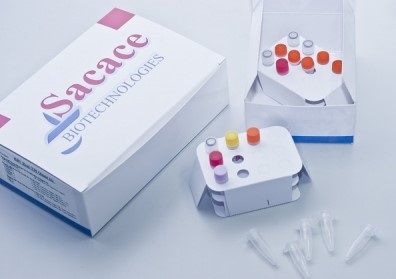


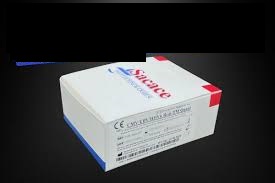
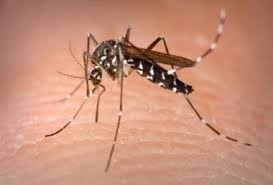

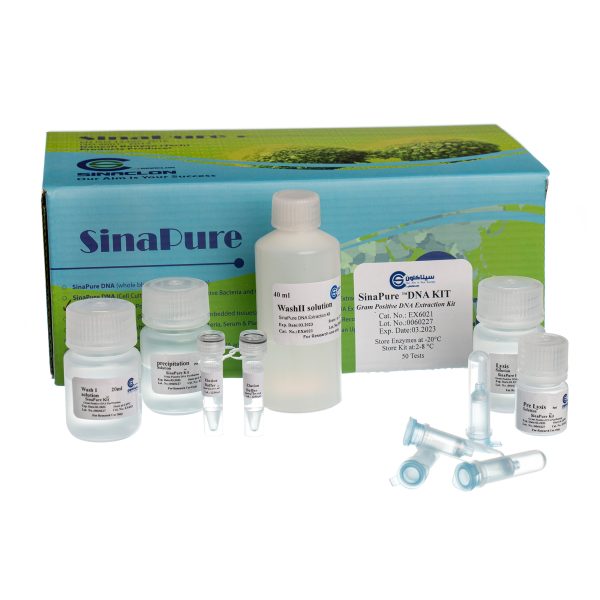
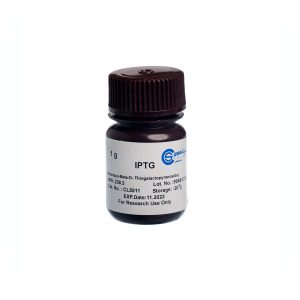
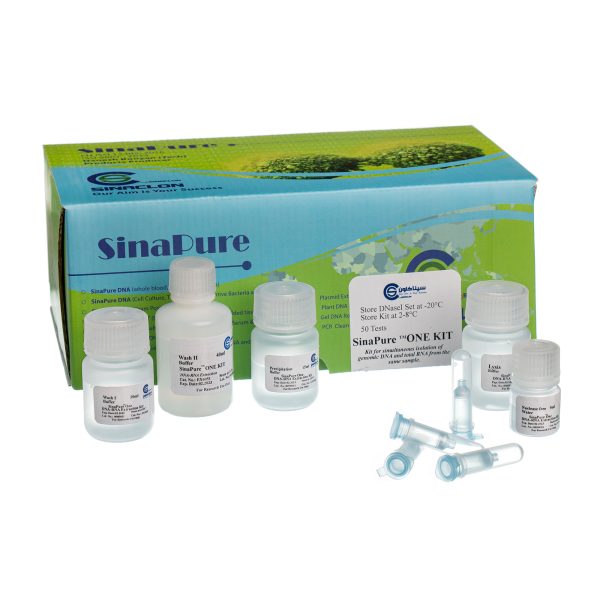
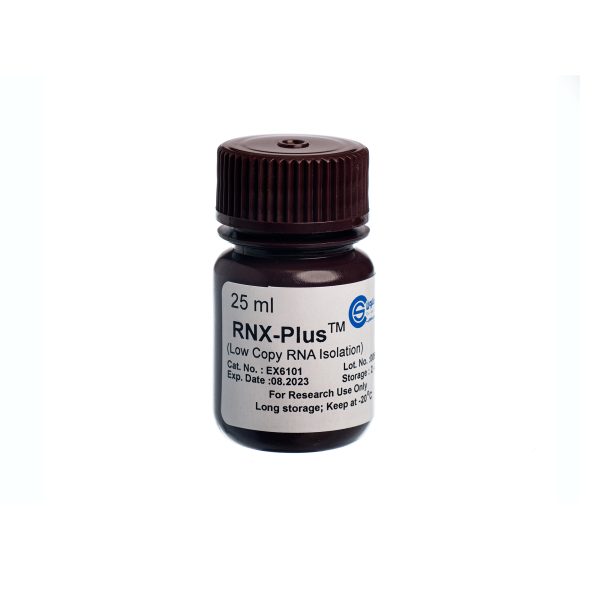
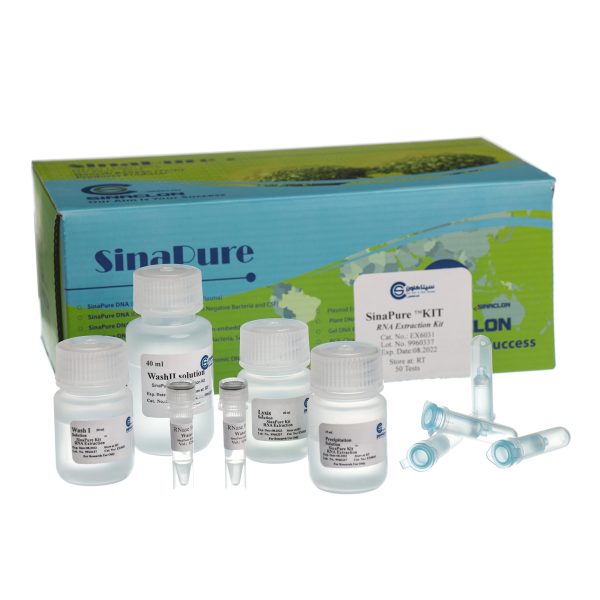
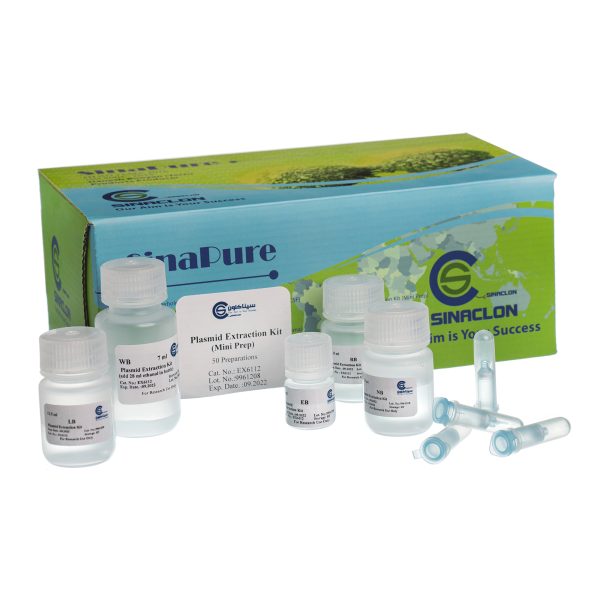
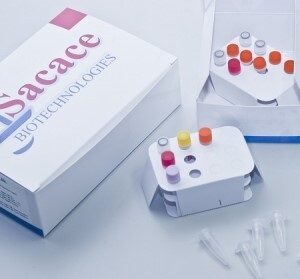
نقد و بررسیها
هنوز بررسیای ثبت نشده است.